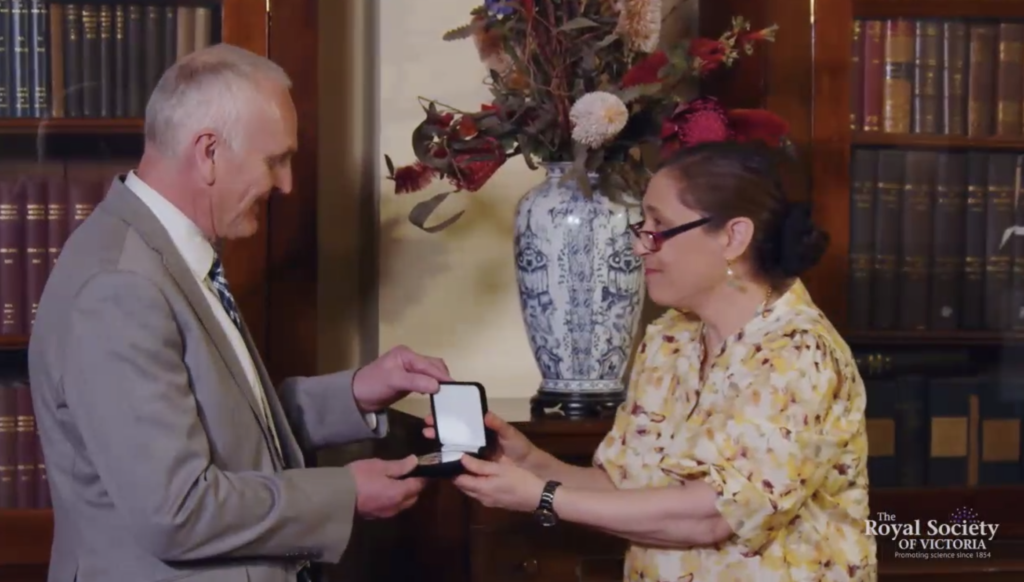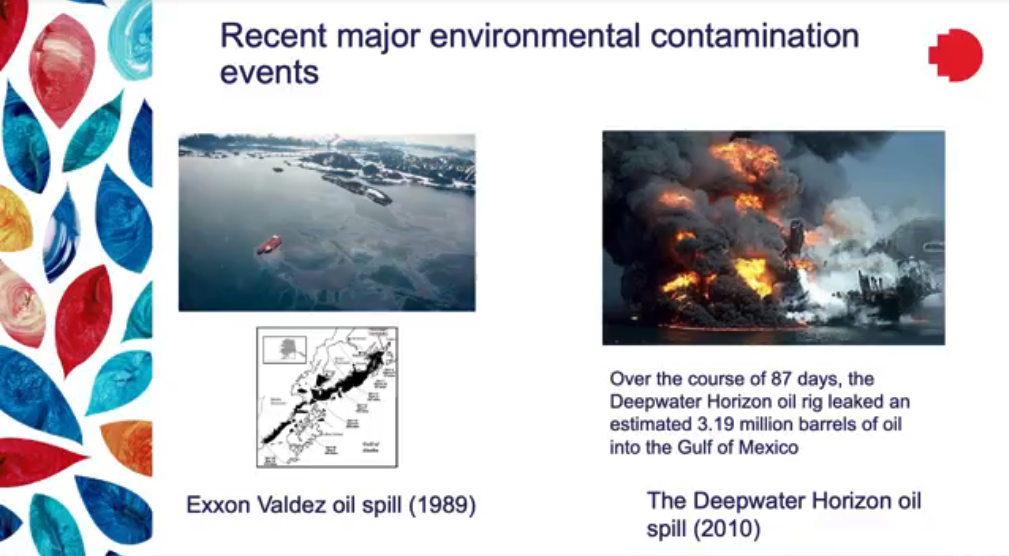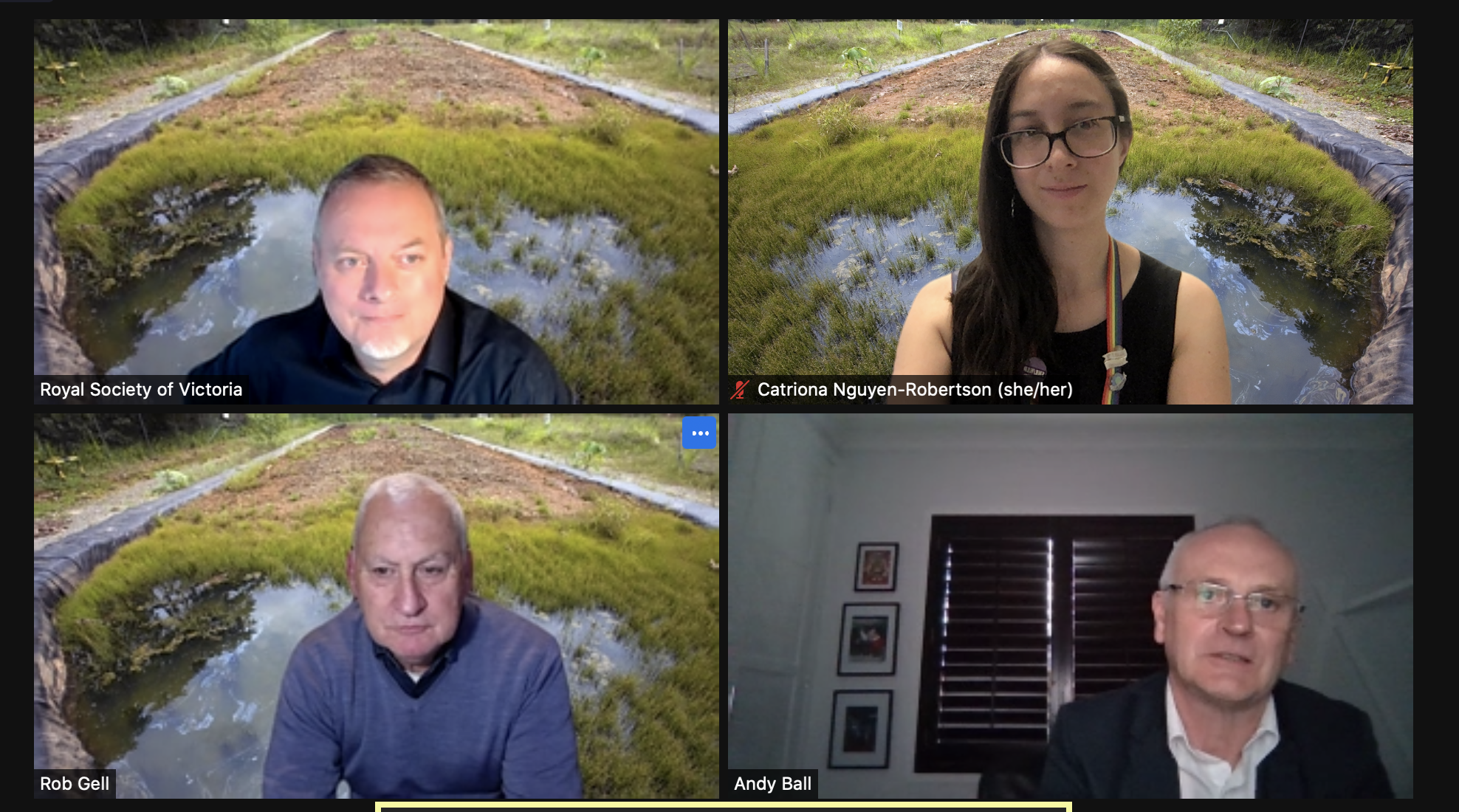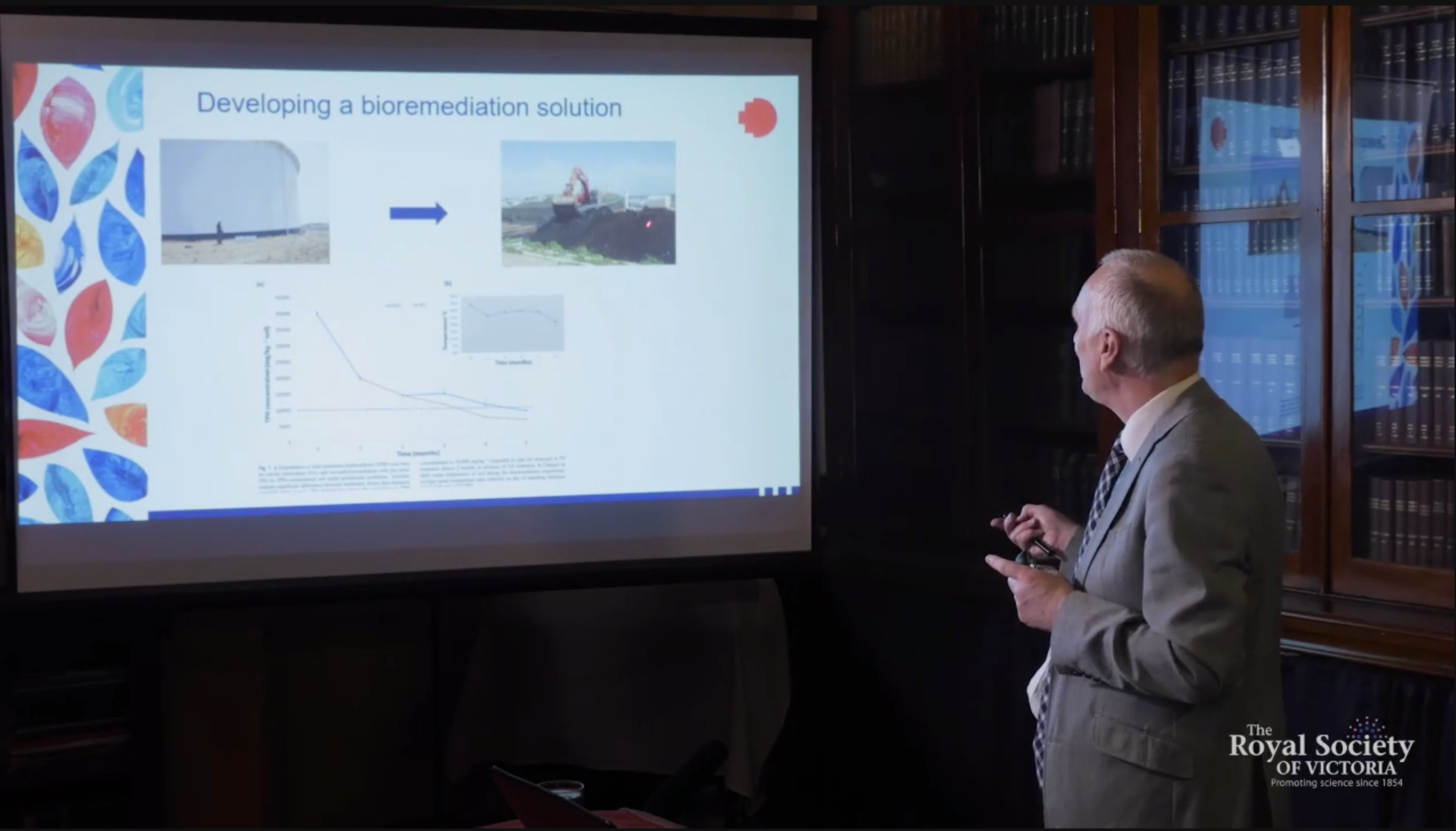Bioremediation: a pollution solution
Catriona Nguyen-Robertson
RSV Science Communication Officer

This article follows a presentation to the Royal Society of Victoria on 9th December 2021 titled “Bioremediation: restoring contaminated ecosystems, naturally” delivered by Professor Andrew Ball (RMIT University), recipient of the 2021 RSV Medal for Excellence in Scientific Research.
The environment is constantly being bombarded with an array of contaminants. Pollutants are everywhere on the planet. They are found in deepest oceans, high in the air, in urban areas and the most desolate places on Earth.
‘Once compounds are in the environment, they are transported across vast distances,’ Prof. Andy Ball says. ‘This is a global problem.’
Over three million contaminated sites are scattered across the globe – a large underestimate – most of which remain untreated. And pollutants are only becoming increasingly complex as humans develop new chemicals that leech into the environment. Andy is working towards a solution.
Andy leads bioremediation projects in contaminated sites all over the world. His contributions to the fields of microbiology and biotechnology were recognised as the recipient of the RSV 2021 Medal for Excellence in Scientific Research. His work ensures that we become ‘better custodians of our environment,’ as The Hon. Lily D’Ambrosio MP noted when presenting him with the award.
 For decades, it was presumed that the environment was resilient, and that “little spills” here and there would not greatly harm it. The 1989 Exxon Valdex oil spill was a turning point: 11 million gallons of crude oil spilled from an oil tanker, impacting miles of Alaskan coastline. It was the worst oil spill in the U.S. until the Deepwater Horizon oil spill in 2010 dumped 3.19 million barrels of oil into the Gulf of Mexico over 87 days. On top of the constant waste from agricultural farms, textile factories, and even homes, it became clear that the environment would not simply bounce back from our waste.
For decades, it was presumed that the environment was resilient, and that “little spills” here and there would not greatly harm it. The 1989 Exxon Valdex oil spill was a turning point: 11 million gallons of crude oil spilled from an oil tanker, impacting miles of Alaskan coastline. It was the worst oil spill in the U.S. until the Deepwater Horizon oil spill in 2010 dumped 3.19 million barrels of oil into the Gulf of Mexico over 87 days. On top of the constant waste from agricultural farms, textile factories, and even homes, it became clear that the environment would not simply bounce back from our waste.
The typical approach of dealing with waste was often to sweep it under the carpet – to literally bury it. While a cheap solution, it is unsustainable, especially as chemicals would inevitably eventually leech. Thermal desorption of chemicals by heating contaminated soil to high temperatures does remove contaminants but is expensive and renders the soil dead and useless. The best solution is bioremediation.
Bioremediation uses naturally occurring organisms (mainly bacteria) to break down contaminants into non-harmful products. Organisms that can work 24/7 for free.

An estimated five million trillion trillion bacteria live on the planet. Having evolved over billions of years, they have evolved to use everything at their disposal on Earth as nutrients to survive and thrive. Including our waste.
One third of current bioremediation projects currently target petroleum waste because microbes have lived side-by-side crude oil for so long. Using native microbes that already exist in the environment, some species can use carbon from oil to grow and often convert toxic pollutants to harmless things such as water and carbon dioxide.
Andy and his team have contributed to the clean-up of contaminated sites around the world. He has supervised over 80 research students, all of whom are committed to developing bioremediation solutions and putting them into practice. Their work often begins in a lab, identifying the microbes that can breakdown specific types of waste and the nutrients that help them do so faster, and then quickly moves into the field.
One student, for example, began their PhD by growing microorganisms in a flask with a bit of waste oil. By the end of her studies, she was spraying a solution of those microbes and all the nutrients they need onto contaminated soil. From those humble beginnings in a lab, 1000 m3 of contaminated soil eventually became clean enough for use in gardens.
At a petroleum facility on Jurong Island in Singapore, another of Andy’s former students, Dr Greg Poi, has implemented a large-scale bioremediation project. Ground water at the site was contaminated with petroleum compounds (collectively known as total petroleum hydrocarbons). By incubating a cocktail of microbes with the contaminated ground water in a tank, and providing a fresh supply of microbes every month, Greg and Andy successfully treated 200,000 L of water. Once they had demonstrated the effectiveness of bioremediation to the company, they asked whether it could treat their soil problem too – and now Greg has his own bioremediation company in Singapore built on that initial success.

Andy believes that it is important to commercialise and translate the findings of his team’s laboratory research for use in the field. But the basic research never stops, especially given that increasingly complex compounds are being produced and released into the environment.
Chlorinated compounds, for example, have become ubiquitous in the environment and are difficult to treat. Chloroethene, used in dry cleaning and degreasing agents, is now common in ground water. Around 10 years ago, a bacterial species was discovered that could remove the chlorine groups from chloroethene from the environment. The bacteria, Dehalococcides, are commercially available to buy and add to ground water, but Andy has shied away from using them in Australia as they might not be indigenous to the environment. Instead, he focused on existing microbial communities rather than relying on a single species and managed to manipulate existing microbe communities in ground water sampling sites across Victoria to do the same thing.
Plants can also be used in a process called phytoremediation to take up heavy metals in the soil. In this process, precious metals are taken up into plant roots and can be recycled. Waste plant matter such as mouldy straw can also be repurposed for bioremediation as they full of organisms like fungi that can break down pollutants.
Given that it is anthropogenic activity that pollutes the environment, it is only fitting that we turn to natural solutions to help restore it to how it used to be. As we continue to pollute the environment with emerging microplastics, pharmacological products, and other chemicals, we need new solutions for these newer pollutants. Synthetic biology (e.g. improving naturally-occurring enzymes) might be the answer, and Andy is excited to see how the field evolves.
‘We are still polluting our environment – day in and day out – with new, emerging pollutants. Every individual needs to reflect on waste they are contributing and minimise their footprint,’ says Andy.
The consequences of pollution go far, but with people like Andy Ball on the case, we might be able to clean up our mess.






